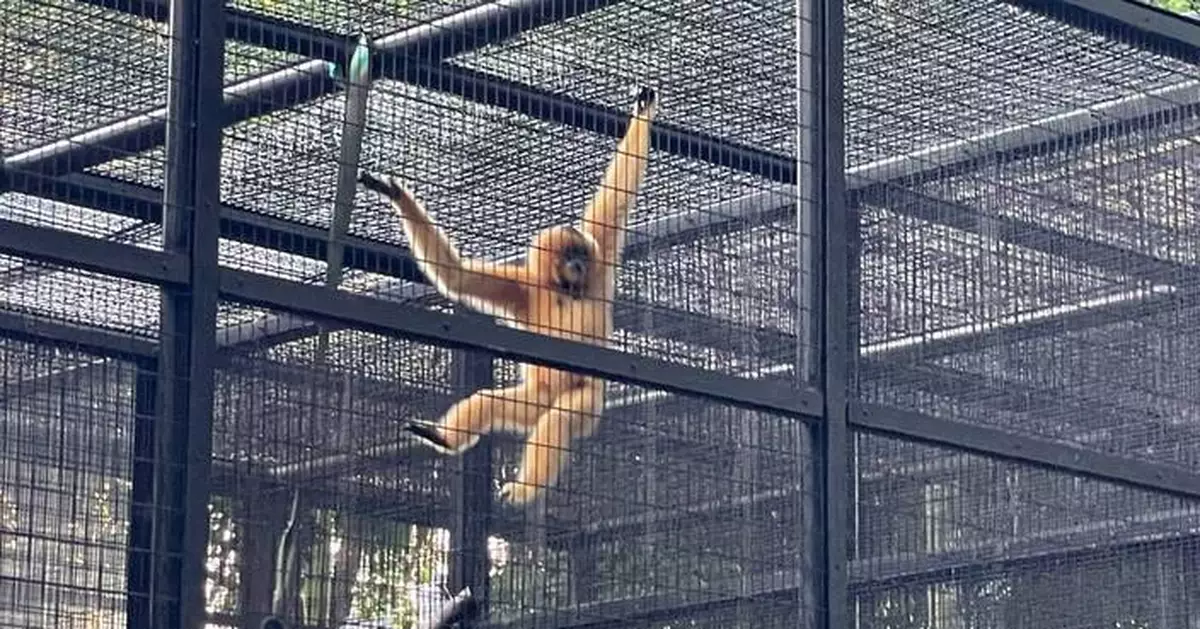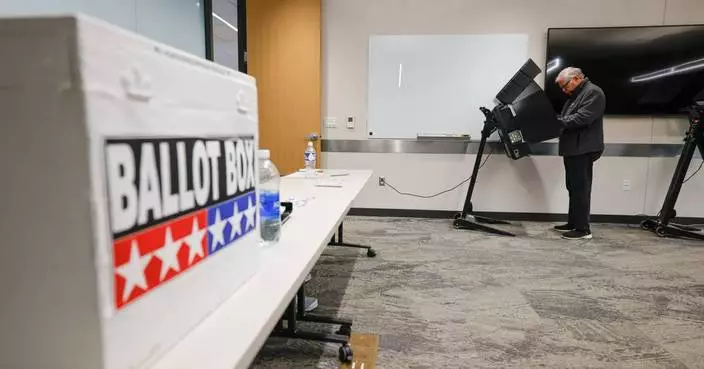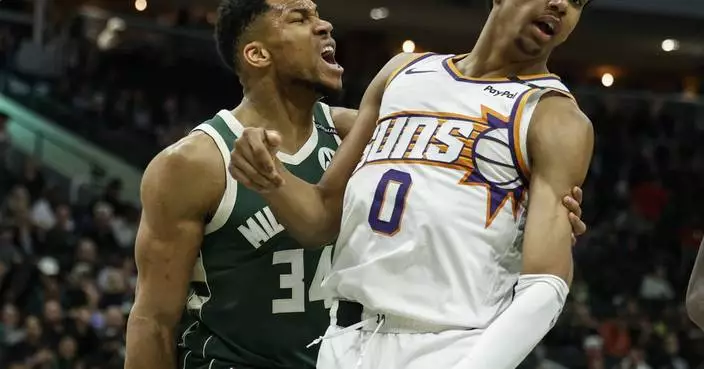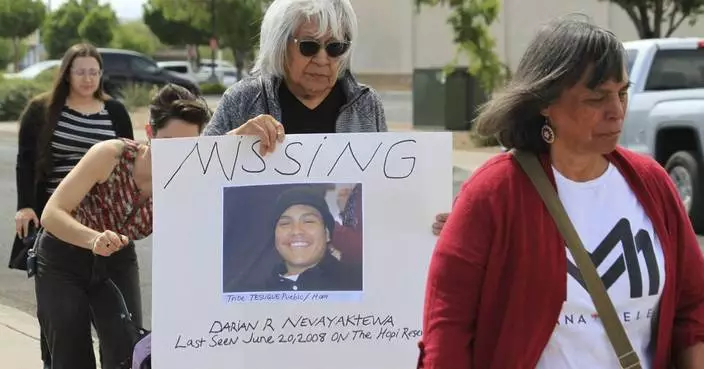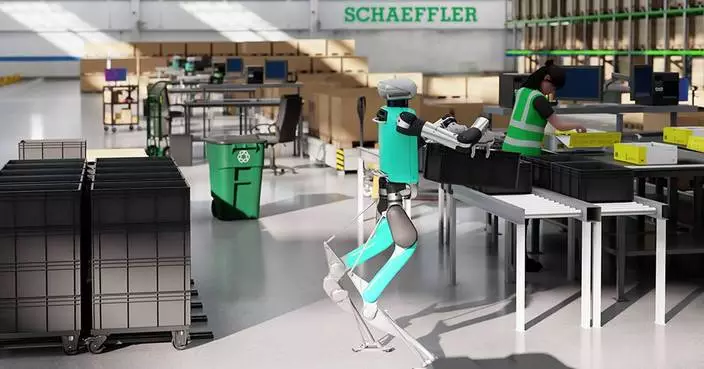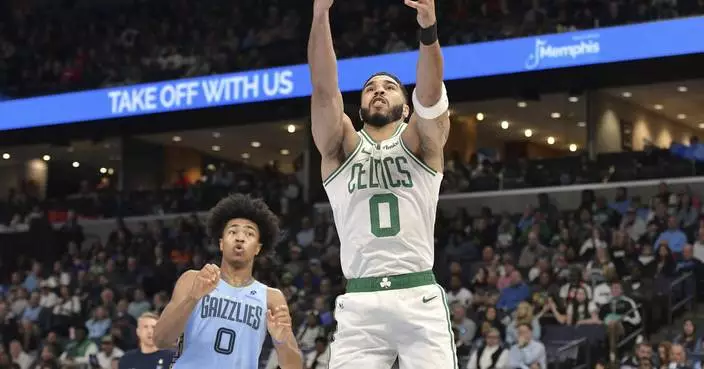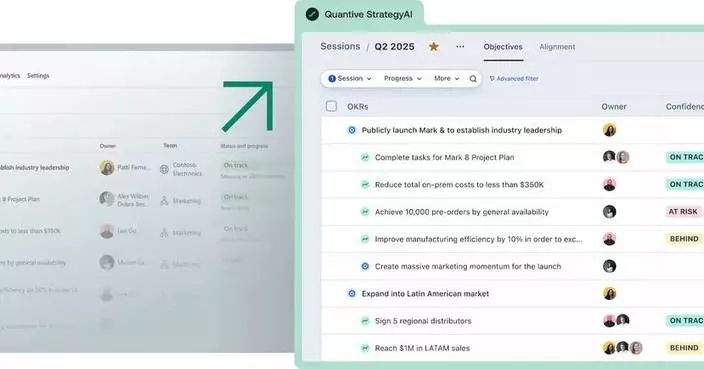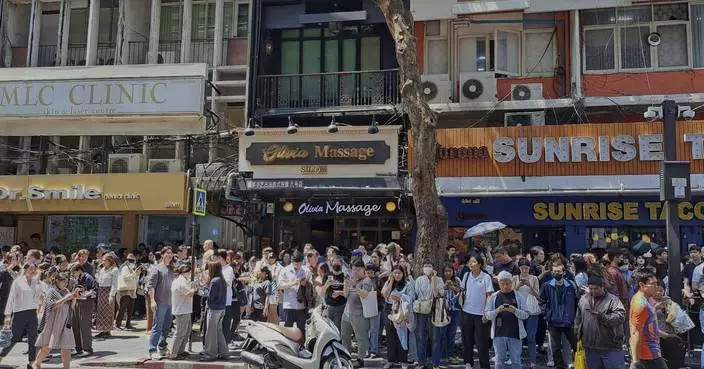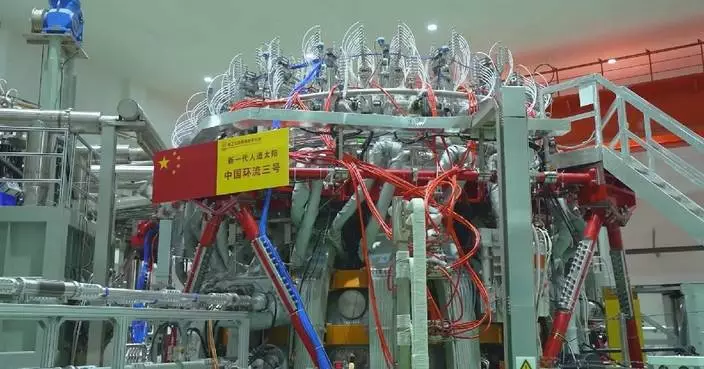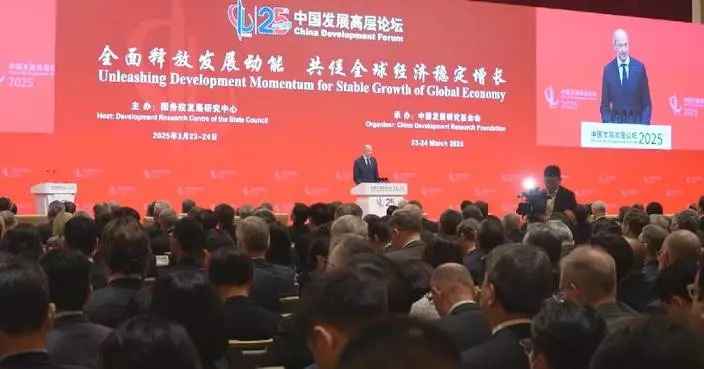HONG KONG (AP) — Nine monkeys who died in Hong Kong's oldest zoo in two days this week had been infected with an endemic disease, possibly after some digging work near their cages, officials said on Friday.
Secretary for Culture, Sports and Tourism Kevin Yeung said in a press briefing that the animals in the Hong Kong Zoological and Botanical Gardens contracted melioidosis and the disease later caused them to develop sepsis.
Yeung stressed that such infections typically occur through contact with contaminated soil and water and that there is generally no danger to humans from contact with infected animals or people.
“We're saddened by the passing of the nine monkeys,” he said.
Eight monkeys were found dead on Sunday, and another died Monday after displaying unusual behavior. The deceased animals were a De Brazza’s monkey, a common squirrel monkey, four white-faced sakis and three cotton-top tamarins — a species listed as critically endangered by the International Union for Conservation of Nature.
According to Hong Kong's Center for Health Protection, melioidosis is caused by the bacterium Burkholderia pseudomallei, which is widespread in soils and muddy water.
Yeung said the park conducted digging work to repair some irrigation pipes under the flower bed near the monkey cages in early October and that the deaths might be related to that.
He said the monkeys might have come into contact with the bacteria after the park's staff walked into their cages with possibly contaminated shoes. Another possibility is that some infected monkeys had close contact with other monkeys, he said.
“The incubation period for melioidosis in primates is about a week and this matched with the period after the soil digging work,” he said.
Edwin Tsui, the controller of the center, said the incident only happened in a single zone and its impact on Hong Kong residents would be very low.
Yeung on Monday held an urgent interdepartmental meeting about the deaths with the Leisure and Cultural Services Department, the Agriculture, Fisheries and Conservation Department and the Department of Health.
Another De Brazza’s monkey also displayed unusual behavior and appetite but offiicials said its condition remained stable on Friday.
The Hong Kong Zoological and Botanical Gardens — the oldest park in the former British colony — fully opened to the public in 1871. It is a rare urban oasis in the downtown Central district of the financial hub, which returned to Chinese rule in 1997.

A cordon with the words danger is placed around the enclosures of monkeys after the mysterious deaths of several monkeys at the Hong Kong Zoological and Botanical Gardens in Hong Kong, Tuesday, Oct. 15, 2024. (AP Photo)
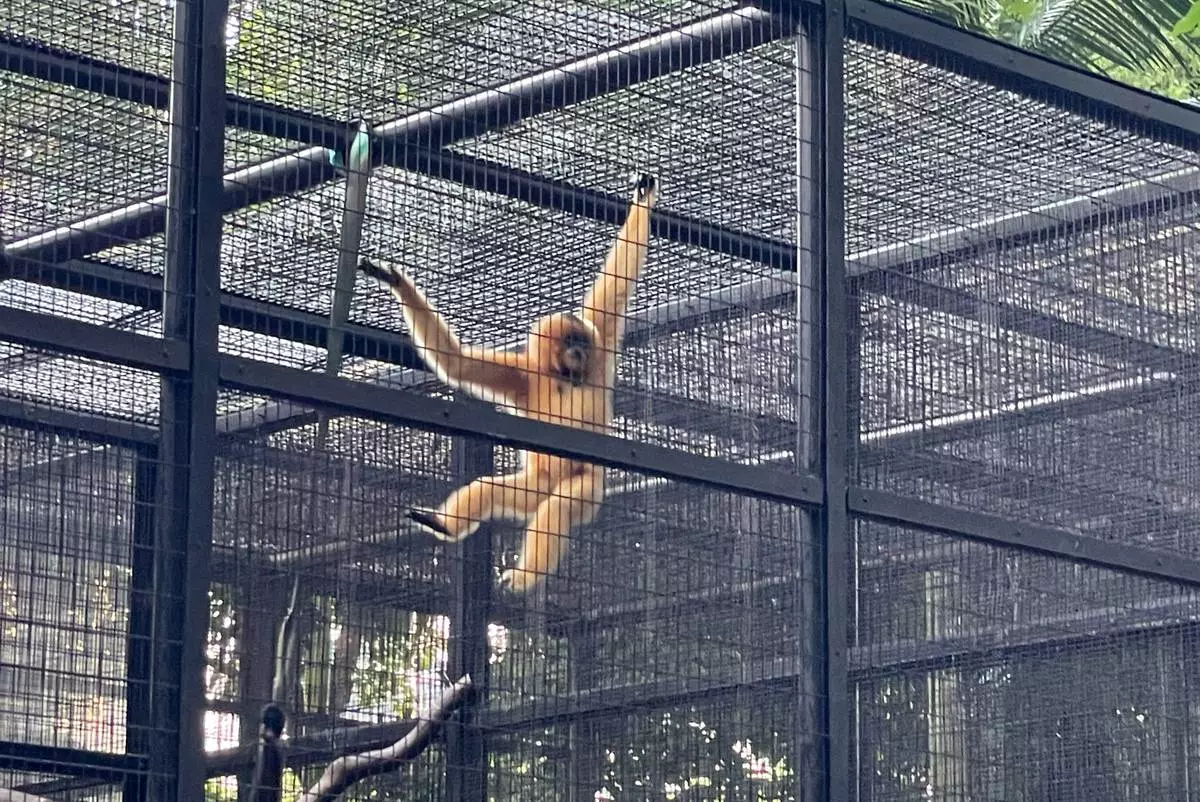
A buff-cheeked gibbon swings in its cage at Hong Kong's Zoological and Botanical Gardens in Hong Kong, Tuesday, Oct. 15, 2024. (AP Photo)
WASHINGTON (AP) — The U.S. Naval Academy has removed nearly 400 books from its library after being told by Defense Secretary Pete Hegseth's office to review and get rid of ones that promote diversity, equity and inclusion, U.S officials said Tuesday.
Academy officials were told to review the library late last week, and an initial search had identified about 900 books for a closer look. They decided on nearly 400 to remove and began doing so Monday, finishing before Hegseth arrived for a visit Tuesday that had already been planned and was not connected to the library purge, officials said. A list of the books has not yet been made available.
Pulling the books off the shelves is another step in the Trump administration’s far-reaching effort to eliminate so-called DEI content from federal agencies, including policies, programs, online and social media postings and curriculum at schools.
Pentagon spokesman Sean Parnell said late Tuesday, “All service academies are fully committed to executing and implementing President Trump’s Executive Orders.”
The Naval Academy in Annapolis, Maryland, the Air Force Academy near Colorado Springs, Colorado, and the U.S. Military Academy in West Point, New York, had not been included in President Donald Trump's executive order in January that banned DEI instruction, programs or curriculum in kindergarten through 12th grade schools that receive federal funding. That is because the academies are colleges.
Pentagon leaders, however, suddenly turned their attention to the Naval Academy last week when a media report noted that the school had not removed books that promoted DEI. A U.S. official said the academy was told late last week to conduct the review and removal. It isn't clear if the order was directed by Hegseth or someone else on his staff.
A West Point official confirmed that the school had completed a review of its curriculum and was prepared to review library content if directed by the Army. The Air Force and Naval academies had also done curriculum reviews as had been required.
An Air Force Academy official said the school continually reviews its curriculum, coursework and other materials to ensure it all complies with executive orders and Defense Department policies. Last week, Lt. Gen. Tony Bauernfeind, the Air Force Academy superintendent, told Congress that the school was in the middle of its course review, but there was no mention of books.
The officials spoke on condition of anonymity to discuss academy policies.
Hegseth has aggressively pushed the department to erase DEI programs and online content, but the campaign has been met with questions from angry lawmakers, local leaders and citizens over the removal of military heroes and historic mentions from Defense Department websites and social media pages.
In response, the department has scrambled to restore some of those posts as their removals have come to light.
The confusion about how to interpret the DEI policy was underscored Monday as Naval Academy personnel mistakenly removed some photos of distinguished female Jewish graduates from a display case as they prepared for Hegseth's visit. The photos were put back.
In a statement, the Navy said it is aware that photos were mistakenly removed from the Naval Academy Jewish Center. It said U.S. Naval Academy leadership was immediately taking steps to review and correct the unauthorized removal.
Hegseth spoke with students and had lunch at the academy Tuesday, but media were not invited or allowed to cover the visit.

U.S. Secretary of Defense Pete Hegseth attends a joint news conference with Japan's Defense Minister Gen Nakatani at the Ministry of Defense in Tokyo Sunday, March 30, 2025. (Kiyoshi Ota/Pool Photo via AP)
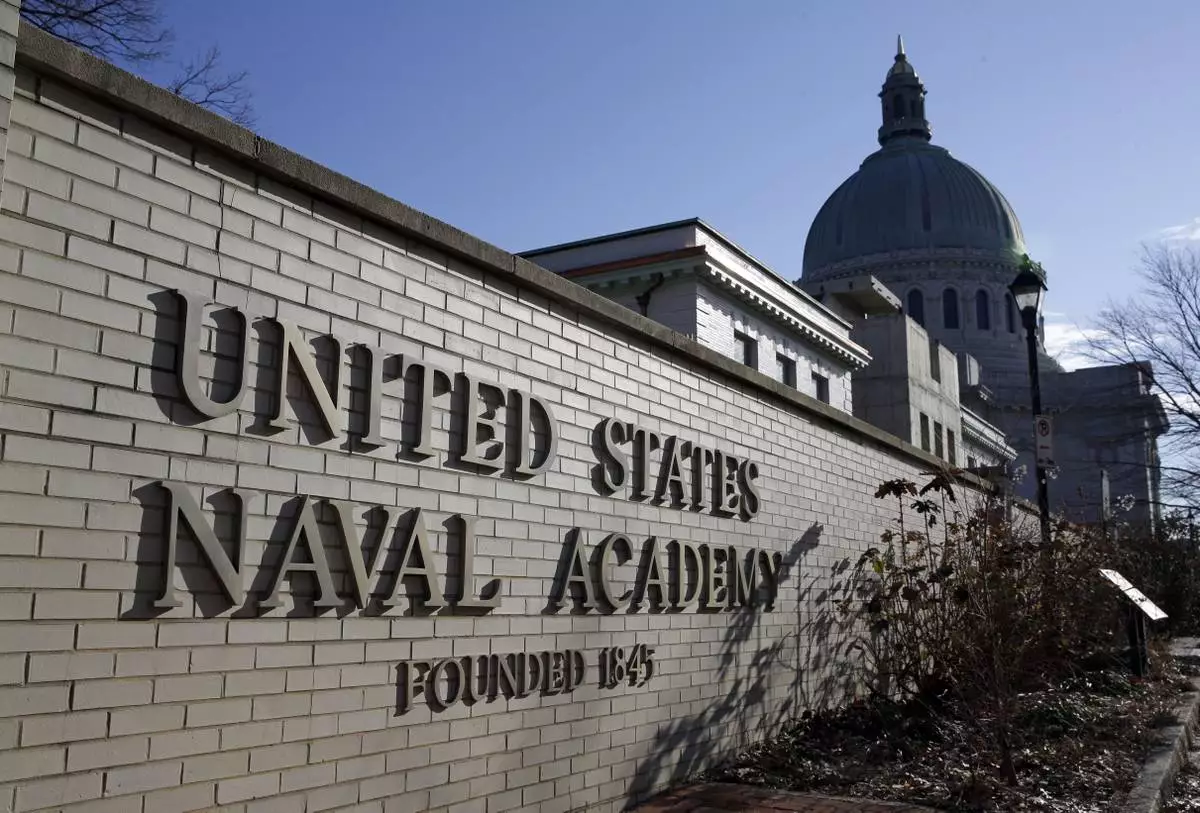
FILE - An entrance to the U.S. Naval Academy campus in Annapolis, Md., is seen Jan. 9, 2014. (AP Photo/Patrick Semansky, File)




